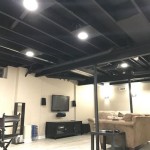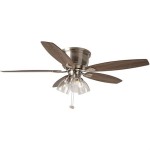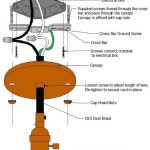Insulating Ceiling Light Cans: Enhancing Energy Efficiency and Safety
Ceiling light cans play a crucial role in illuminating our homes and commercial spaces. However, if not properly insulated, they can be a significant source of energy loss and safety hazards. Insulating ceiling light cans is an essential measure to maximize energy efficiency, reduce fire risks, and improve the overall comfort of your living or working environment.
Benefits of Insulating Ceiling Light Cans
Insulating ceiling light cans offers numerous benefits, including:
- Reduced Energy Loss: Insulation acts as a barrier, preventing warm or cool air from escaping through the light can's fixture. This can significantly reduce heating or cooling costs, as less energy is needed to maintain the desired temperature.
- Improved Air Quality: Insulation helps to seal air leaks, preventing dust, allergens, and other airborne particles from entering through the light can fixture. This can improve indoor air quality and reduce the risk of respiratory problems.
- Increased Safety: Insulation acts as a layer of protection, reducing the risk of electrical fires caused by overheated wiring or exposed electrical components. It also prevents the spread of flames should a fire occur elsewhere in the building.
Materials for Insulating Ceiling Light Cans
When insulating ceiling light cans, it is important to choose the right materials to ensure both effectiveness and safety:
- Fiberglass Batts: Fiberglass batts are a common and affordable option for insulating light cans. They are easy to handle and install, and provide good thermal resistance.
- Cellulose Insulation: Cellulose insulation is made from recycled paper and is an eco-friendly alternative to fiberglass. It has similar insulating properties and is also resistant to fire.
- Spray Foam Insulation: Spray foam insulation is a more expensive option, but it offers excellent sealing and insulation properties. It conforms to the shape of the light can, filling any gaps or holes.
How to Insulate Ceiling Light Cans
Insulating ceiling light cans is a relatively simple process that can be completed in a few steps:
- Turn off the Power: Before you begin, it is essential to turn off the power to the light can at the breaker panel.
- Remove the Light Fixture: Carefully remove the light fixture from the can by following the manufacturer's instructions.
- Clean the Can: Use a vacuum cleaner to remove any dust or debris from the light can.
- Apply Insulation: Cut the insulation material to fit the shape of the light can. Carefully insert the insulation into the can, making sure to fill any gaps.
- Seal Any Gaps: Use caulk or expanding foam to seal any gaps around the light can's edges where air could escape.
- Replace the Light Fixture: Reattach the light fixture to the insulated light can and turn the power back on.
Professional Installation
While insulating ceiling light cans is a straightforward task, it is always advisable to consult a qualified electrician if you are not familiar with electrical work. A professional electrician can ensure that the insulation is installed correctly and meets safety standards.
Insulating ceiling light cans is a cost-effective and effective way to improve energy efficiency, enhance safety, and improve air quality. By following these steps or seeking professional assistance, you can reap the benefits of properly insulated light cans and enjoy a more comfortable and energy-efficient living or working environment.

Air Sealing Can Lights Safely Fine Homebuilding

How To Use Insulated Can Lights In Ceilings Diy
A Never Worry Again Insulated Ceiling Jlc

Home Recessed Light Cover Covers

Recessed Lights Covered With Insulation Electrical Inspections Internachi Forum

Insulating And Air Sealing Existing Non Icat Recessed Lights Building America Solution Center

Ic Vs Non Rated Led Light

Downlights And Recessed Lights Smarter Homes

How To Seal Recessed Light Fixtures For Energy Efficiency Today S Homeowner

Insulating And Air Sealing Existing Non Icat Recessed Lights Building America Solution Center
Related Posts









